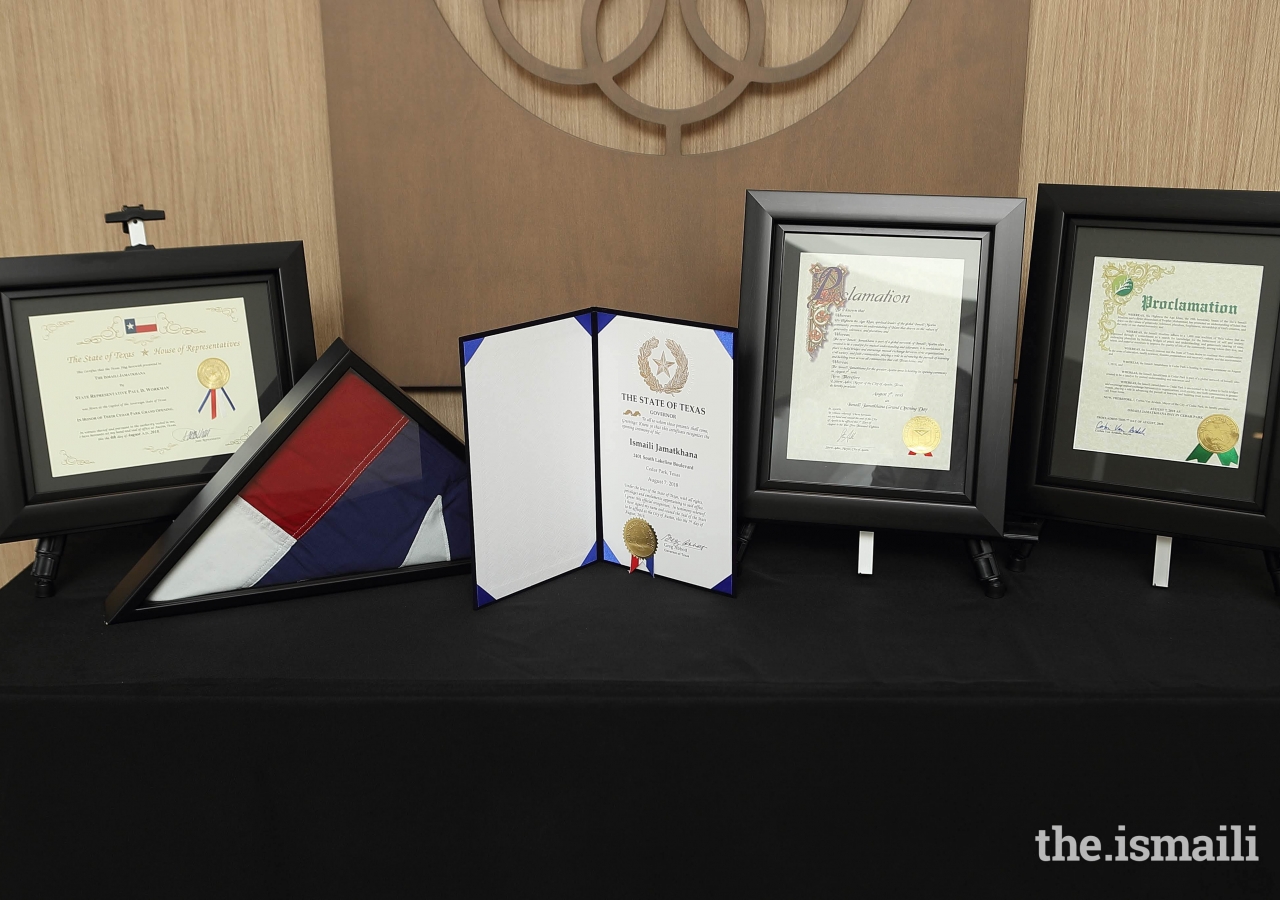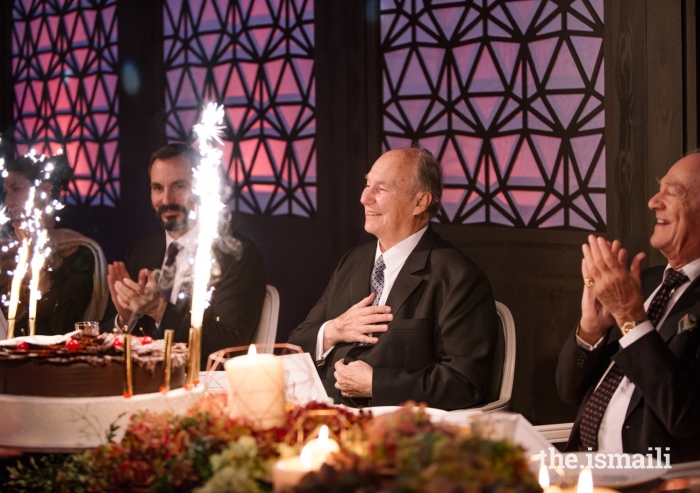Upon arriving at the new Jamatkhana, visitors were struck by its gleaming white facade. Many walked into the building for the first time on 7 August and saw its iconic circular motif of eight overlapping circles, which adorn the exterior walls and outdoor waterfall feature.
The Mayor of Cedar Park, Corbin Van Arsdale, addressed the assembled guests, noting that “Cedar Park is a diverse community … and the Ismaili community brings additional diversity, professionalism, and a servant-hearted ethic that adds great value and quality to our experience in our community.” He recounted attending a Jamatkhana tour a few weeks earlier, and being “struck by the warmth of the people here as well as the architecture and the feeling of the building itself.”
Dr. Barkat Fazal, President of the Ismaili Council for the United States, welcomed the guests and provided a context on the functions of the Jamatkhana: “This centre is envisioned to be a place to build bridges and encourage dialogue between our civic organisations, civil society, and faith communities,” he said.
Following President Fazal’s remarks, Texas Governor Greg Abbott delivered a keynote address in which he also acknowledged the Jamatkhana as “a place of civic and interfaith engagement — a place to share knowledge, to learn, and unite cultures.” He also recognised the Ismaili community’s dedication to volunteerism. He thanked the 2,500 Ismaili volunteers who dedicated more than 13,000 hours to the evacuation and recovery efforts in the aftermath of Hurricane Harvey, telling the 150-plus attendees present, that “Texas is forever thankful for the way these volunteers came together to help those in need.”
Following the remarks, Governor Abbott, Mayor Van Arsdale, and President Fazal stood together to unveil a commemorative plaque. Governor Abbott then presented a signed proclamation recognising the opening ceremony of the Ismaili Jamatkhana.
After the opening ceremony concluded in the social hall — designed to accommodate educational and social events such as seminars and conferences — the guests gathered to greet one another under the Jamatkhana’s rotunda, which features a large skylight to let in natural light. Here, they were able to view the Ethics in Action exhibit, depicting the work of the Aga Khan Development Network, and join guided tours of the building, to learn about its architecture and many functions.
Attendees at the event included elected city, county, and state officials, as well as leaders from academic and healthcare institutions, interfaith leaders, and representatives from diverse civil society organisations.
Many marvelled at the circular motif found in details from the Jamatkhana’s carpeting to the metal latticework. The tessellating motif symbolises unity and diversity in nature, and is inspired by both traditional Islamic geometry and the clean, modern lines of mid-century architecture prevalent across the Austin area.
The total Jamatkhana space of over 28,000 square feet, designed locally by the renowned Austin company, Pfluger Architects, includes dedicated areas for early learning classrooms, a library, religious education classrooms, and a small conference room, alongside a 7,000-square-feet prayer hall.
One of the most remarkable aspects of the event was that individuals from across diverse communities had all come together under one roof for this momentous occasion.
“I’m very impressed with the community, the centre, and the outreach into the broader community. Just a minute ago, we had individuals from the Jewish, Muslim, and Hindu communities all in one circle of conversation,” noted Earl Maxwell, CEO of St. David’s Foundation, an organisation addressing the most pressing health challenges in the Central Texas region.
“It warms my heart to see a community that is all about inclusivity and gives it such a high value,” remarked Simone Flowers, the Executive Director of Interfaith Action of Central Texas. “This is such a beautiful place … there’s so much light, and the energy is really positive. I can’t wait to have an interfaith event here.”















